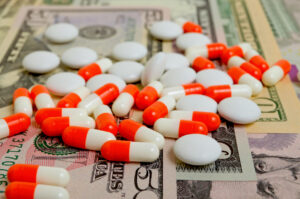Surcharge, not R & D costs account for high U.S. pharmaceutical prices

When asked why prescription drug prices are exponentially higher in the United States than in other countries, pharmaceutical companies say U.S. premium –or surcharge- pricing is necessary to cover their research and development (R & D) expenses. But R & D costs do not justify continued rising drug prices, according to a report in the Health Affairs Blog.
Researchers focused on the public filings where pharmaceutical companies reported their R&D expenses. They specifically looked at the surcharges paid by U.S. consumers and taxpayers vs. their global R & D expenses. The investigation targeted 15 drug companies that manufactured the top 20 drugs sold globally in 2015.
Researchers found:
- Drug prices in other countries averaged about 41 percent of the prices charged in the United States.
- U.S. surcharge pricing generated $116 billion while companies spent much less, $76 billion, on global R & D.
- On average, excess revenues from the U.S. pricing was 163 percent of the global R & D spending.
Billions of dollars are left over after R & D expenses, the study concluded. If the 15 pharmaceutical companies lowered the U.S. premiums to match the global R & D costs, U.S. patients, business and taxpayers could have saved about $40 billion.
Have you been affected by high drug prices? Share your story with Voices for Affordable Health.